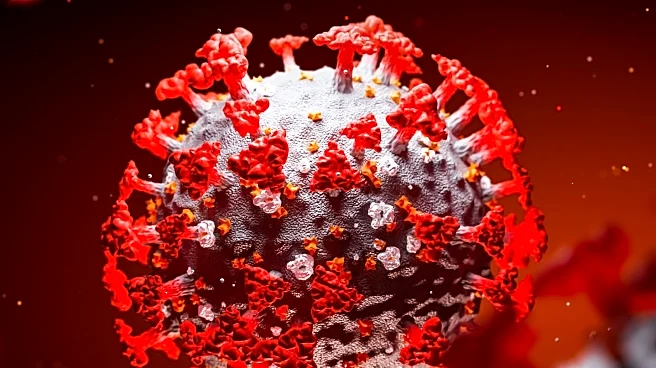What's Happening?
Yale researchers have utilized advanced 3D imaging technology, cryo-electron microscopy (cryo-EM), to uncover the mechanisms of Legionnaires' disease, a severe form of pneumonia. This breakthrough reveals the biological nano-machine used by the Legionella bacteria to infect host cells. The study, led by Professor Craig Roy, identified the complex structure and function of the Dot/Icm type IV secretion system, which is crucial for the bacteria's ability to cause disease.
Why It's Important?
The findings could lead to the development of new therapeutic drugs to combat Legionnaires' disease, which affects approximately 10,000 people annually in the U.S. The ability to visualize the bacterial machinery in high-definition 3D provides insights into how Legionella transfers antibiotic-resistant genes, potentially addressing broader issues of antimicrobial resistance. This research represents a significant advancement in understanding bacterial infections and could influence future treatments for pneumonia and other related diseases.
What's Next?
Further research is expected to explore the mechanical channel used by Legionella to deliver effector proteins into host cells. The team aims to manipulate the bacteria's ability to transfer antibiotic-resistant genes, which could have implications for combating antimicrobial resistance. Continued advancements in cryo-EM technology may enable deeper exploration of bacterial structures and functions, paving the way for innovative treatments.
Beyond the Headlines
The study highlights the importance of technological advancements in scientific research, particularly in understanding complex biological systems. The use of cryo-EM has opened new avenues for studying bacterial infections at a molecular level, which could lead to breakthroughs in other areas of microbiology and immunology. The research also underscores the need for continued investment in cutting-edge technologies to address global health challenges.











